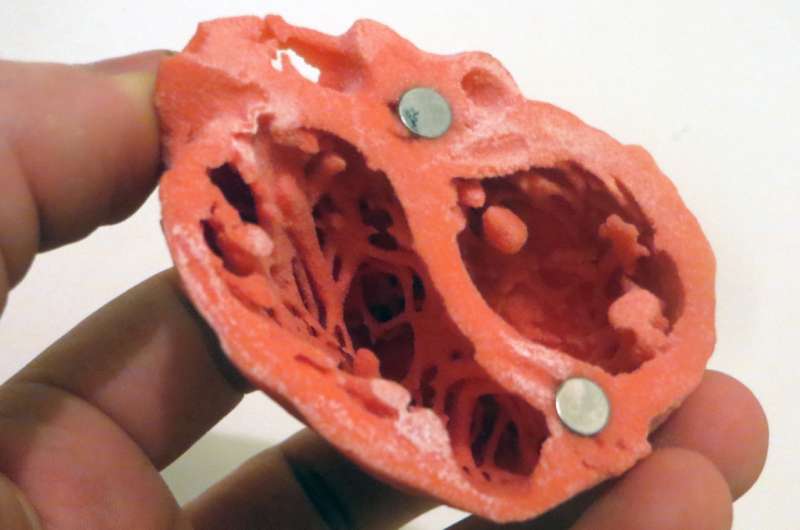Proteins cooperate to break up energy structures in oxygen starved heart cells

During a heart attack, the supply of oxygen to heart cells is decreased. This reduced oxygen level, called hypoxia, causes the cell's powerhouses, the mitochondria, to fragment, impairing cell function and leading to heart failure. Until now, few details have been known about how this process occurs.
Researchers at the National Institute for Physiological Sciences, Japan, have revealed how filamin A, a key component of the cell skeleton, interacts with the protein Drp1 in hypoxic conditions to facilitate mitochondrial fission. Furthermore, the researchers discovered that the drug cilnidipine can prevent this damaging process. The researchers obtained these findings by studying mouse and rat models of heart attacks and examining the action of filamin A and Drp1 in various settings. They recently published their research in Science Signaling.
"Our results demonstrate that filamin A helps to bind Drp1 to the mitochondria," corresponding author Motohiro Nishida says. "When cell oxygen is low, this binding process activates Drp1 and causes the mitochondria to fragment."
The researchers used a surgical mouse model of heart attack along with various immunochemical methods and an analysis of sub-cellular components for investigation. Their work determined that hypoxic stress activated the interaction of filamin A with Drp1 and increased Drp1 activity in rat heart cells.
The mechanism of how the Drp1 and filamin A interaction is regulated when oxygen is low is currently unknown. However, both knockdown and inhibition of Drp1 limited the mitochondrial fragmentation.
In a final analysis, the researchers showed that the drug cilnidipine helps to prevent the resulting damage to heart cells. This is important because there are currently no clinically applicable drugs that regulate the mitochondrial fission process in heart disease. "By using cilnidipine, we were able to reduce heart failure in mice after a heart attack," study lead author Akiyuki Nishimura says. "This is because cilnidipine suppresses Drp1-filamin A complex formation, which thereby reduces mitochondrial fission."
Results from the study indicate that the damage to heart cells as a result of the Drp1-filamin A complex does not occur when oxygen levels are normal. These findings are promising for future research aimed at preventing mitochondrial fission in response to hypoxic conditions. Preventing fission could preserve heart function after a heart attack or in the presence of cardiovascular disease.
More information: Akiyuki Nishimura et al, Hypoxia-induced interaction of filamin with Drp1 causes mitochondrial hyperfission–associated myocardial senescence, Science Signaling (2018). DOI: 10.1126/scisignal.aat5185




















